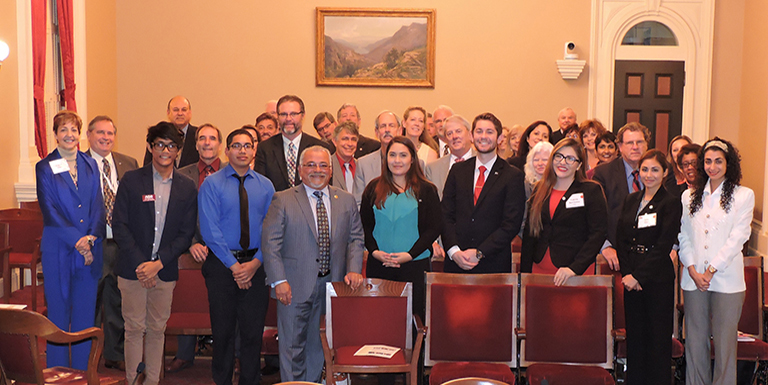Grossmont-Cuyamaca Community College District: San Diego and Imperial Counties Community College Association = Strength in Numbers

For the nine community colleges in California’s San Diego and Imperial counties, “strength in numbers” is more than just an axiom. Through combining their forces—and their voices—college leaders have found that they are able to deliver a powerful message to legislators, the media, and the public.
Representatives from the San Diego and Imperial County colleges meet monthly as part of a consortium known as the San Diego and Imperial Counties Community College Association (SDICCCA). The six college districts, serving a total of more than 200,000 students, range from the San Diego district, the second-largest district in California with three colleges and a continuing education center, to Imperial Valley College, 120 miles away in the small town of El Centro. The other SDICCCA colleges represent the rest of San Diego County: MiraCosta and Palomar colleges to the north, Southwestern College to the south, and Grossmont and Cuyamaca colleges to the east.
At the meetings, CEOs and board presidents from the colleges exchange information and work toward common goals, such as workforce development or improving transfer rates. Representatives from the three public four-year universities in the region also attend the meetings.
SDICCCA has partnered with San Diego State University to build a faculty internship program that has trained hundreds of prospective professors, counselors, and librarians to work in the California community college system. The program, which began in 1994, emphasizes recruiting and preparing community college faculty of color, with the goal of introducing them to mentors at community colleges. About two-thirds of the more than 400 interns who have participated are people of color.
The graduate student interns are placed on a community college campus to secure invaluable on-the-job experience—and it works. One survey of former interns showed that 82 percent had jobs at a community college.
Through SDICCCA, the community colleges in the two-county region also join together to advocate with their legislators, hold press conferences, issue press releases, and market their colleges.
Each January, the Community College League of California hosts a legislative summit at which community colleges around the state come to Sacramento to meet with their legislators. Instead of each college holding individual legislative meetings—many of them with the same lawmakers—the group reserves a room in the State Capitol building and invites the legislators to come to them. SDICCCA develops a common set of talking points on issues involving all of the colleges, and encourages student leaders to attend and ask questions. The meetings are far more effective than individual sessions with legislators and ensure that all of the colleges have the same message.
When state budget cuts hit hard at California’s community colleges, CEOs of all the SDICCCA colleges joined together to hold press conferences warning the public of the dire effect of the reduced funding. One memorable press conference was held on the flight deck of the USS Midway, a former aircraft carrier that has been converted into a museum on the San Diego bay front. Fighter jets loomed in the background as the community college leaders talked about how San Diego County’s community colleges serve 20,000 veterans and military families. The CEO of the Midway joined the press conference and spoke to the importance of community colleges in serving the region’s military personnel.
One of the most poignant moments at the press conference came when veteran Justin Dile, a Grossmont College graduate, spoke of how the college had been warm and welcoming to him as he recovered from a traumatic brain injury and posttraumatic stress disorder.
“Community colleges have a grasp on what veterans need,” Dile said. “Yet the colleges are constantly getting cut on budgets.”
The press conference received extensive coverage on television, radio, newspapers, and other media. Again, demonstrating strength in numbers to communicate a common message made for much better media coverage than any individual college could have gotten.
Other joint efforts the colleges have undertaken through SDICCCA are:
- A survey of 1,400 recent graduates to find out where they had gone after college and how they felt about their community college experience. The survey found that almost all had transferred to a university or were working and felt that their community college education played a key role in their success.
- An economic impact report conducted for the region’s colleges, which showed that the colleges bring in a $6.6 billion increase to California’s income—money generated from the costs of running the colleges and the better jobs and pay that graduates receive.
- A SDICCCA website designed for potential students trying to find out what colleges and programs are located in their area. A password-protected section of the website is also used to house minutes, agendas, and documents from SDICCCA meetings.
Joining forces gives the SDICCCA colleges strength through unity. This is a partnership that is sure to continue for years to come.
Opinions expressed in Member Spotlight are those of the author(s) and/or submitting college and do not necessarily reflect those of the League for Innovation in the Community College.










